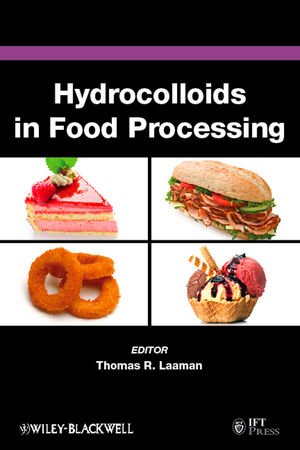Hydrocolloids in Food Processing pdf download
Par evans cynthia le samedi, novembre 7 2015, 21:51 - Lien permanent
Hydrocolloids in Food Processing by Thomas R. Laaman


Hydrocolloids in Food Processing Thomas R. Laaman ebook
Format: pdf
Page: 350
Publisher: John Wiley and Sons
ISBN: 0813820766, 9780813814490
This minimal process relies on water, heat and lye to produce the major types of naturally-occurring carrageenan that differ in structure and food-processing characteristics with a broad range of functionality that enables solutions to pressing food issues including fat Marinalg's primary efforts include the delivery of sound science and technical expertise related to the safety and efficacy in the production and use of hydrocolloids from seaweed farms to family tables. In an effort to undercut the rising cost of flour, sugar and oil, the food industry is using cellulose products like gums and fibers in processed foods to thicken or stabilize foods, replace fat and enhance fiber content. Starch and hydrocolloid interactions. Guar gum is used as a thickener and emulsifier in commercial food processing. Hydrocolloid nanostructures and technology. Hydrocolloids 2012 : 11th International Hydrocolloids Conference: Biofunctionality and Technofunctionality of Hydrocolloids. Explaining what stabilizers should be used and how they should be used, food product by food product, this book provides numerous actual product formu. 2Department of Chemical and Biological Engineering/Food Science, Chalmers University of Technology, SE-41296 Gothenburg, Sweden 3SIK, The Swedish Institute for Food and Biotechnology, SE-402 Recent studies on bread quality from composite cassava-wheat flour have investigated the influence of the baking process, the cassava genotype, and effect of an added hydrocolloid, xanthan gum [8–10]. Mining & Ore processing; Product Knowledge. Vanilla ice cream1 Why In an informative Wall Street Journal piece, Sarah Nassauer explains that cellulose additives belong to a family of substances known as hydrocolloids that act in various ways with water, such as creating gels. "Cost and wellness trends continue to drive textural innovations that stabilizers and emulsifiers support, particularly in processed foods. Functions of Hydrocolloids in cement mix · B.P-Technique for Slurry Trenches. It is non-ionic, free flowing, low pale white colored, coarse to fine powder and is grounded water-soluble hydrocolloids. Newer way to preserve food is a . 8.2 HYDROCOLLOIDS 8.3 MELTS 8.4 POLYMERS 8.5 LIPIDS 8.6 OTHER SHELL MATERIALS (COMPOSITES). Physicochemical properties - emulsions, encapsulation, gels. Categories food science chemistry Bioactive polysaccharides. Food products are required to be abounded of nutrients, and this becomes possible by adoption of encapsulation technology on gross level including weaning food, convenient food, and tertiary processed food.
The Physiology of the Joints: The Trunk and the Vertebral Column, Volume 3 book
Keynes: The Return of the Master book download
Handbook of Detergents, Part D: Formulation (Surfactant Science) ebook